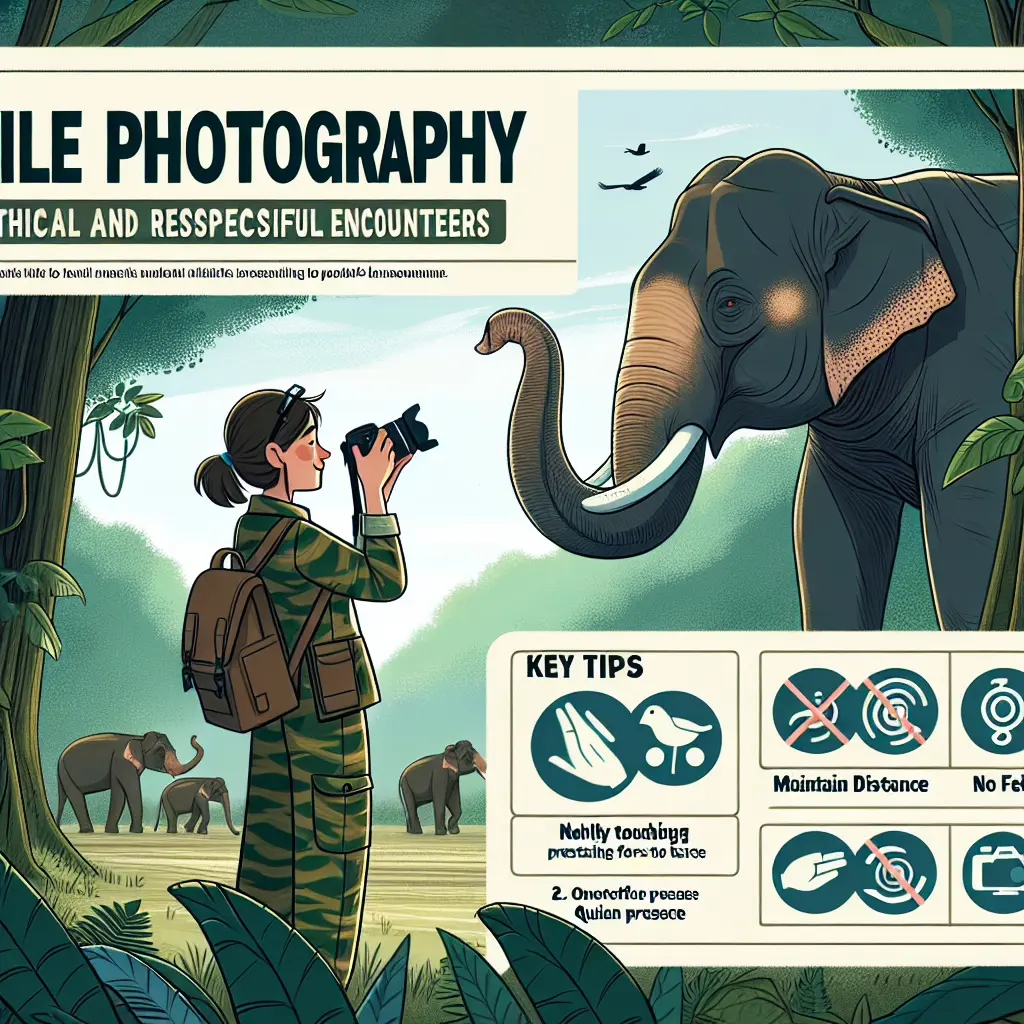
The Art and Ethics of Wildlife Photography
In the captivating world of wildlife photography, capturing the essence of untamed creatures in their natural habitats is an exhilarating pursuit for both seasoned professionals and enthusiastic amateurs. However, as the lens focuses on the majesty of nature, the importance of ethical wildlife photography becomes paramount. Understanding wildlife photography ethics is crucial not only to protect the subjects we so admire but also to promote sustainable practices that safeguard the delicate balance of ecosystems.
The Importance of Ethical Wildlife Photography
Why does ethical wildlife photography matter? It protects the very subjects we aim to celebrate and admire. The recent destruction of a wildlife camera by California's Park Fire serves as a stark reminder of the fragile ecosystems we document. Such events underscore the need for responsible wildlife photography that does not exacerbate environmental threats.
Key Takeaway: Always prioritize the well-being of wildlife and their habitats. Avoid actions that might cause stress or harm to animals.
Utilizing Technology for Ethical Interactions
The digital age offers tools to aid in ethical nature photography. For example, an Instagram filter now warns users when they are too close to wild animals. This tool is invaluable in preventing intrusive encounters that could endanger both wildlife and photographers.
Key Takeaway: Leverage technology to maintain a safe and respectful distance from wildlife. These tools can guide photographers in adhering to guidelines that prioritize safety and respect.
Incorporating Animal Photography Guidelines
Ethical animal photography involves strict adherence to guidelines designed to protect both subjects and photographers. Insights from experts highlight the necessity of understanding animal behavior to prevent distress or disturbance.
Key Takeaway: Study animal behavior and habitats before embarking on a photography expedition. Knowledge of wildlife habits aids in capturing authentic images without disrupting natural activities.
Practical Tips for Respectful Animal Encounters
Research and Preparation
Before setting out, research the species you intend to photograph. Understanding their behaviors, feeding patterns, and breeding seasons can prevent inadvertent disruptions.
Maintain Safe Distances
Use equipment like telephoto lenses to capture detailed images from afar. This approach, highlighted in advice on using telephoto lenses for photographing waves, is equally applicable to wildlife photography.
Silent Observations
Minimize noise by turning off camera sounds and speaking in hushed tones. This reduces stress on animals and increases the chances of capturing candid moments.
Avoid Attracting Wildlife
Do not use food or other means to lure animals into view. This can alter their natural behaviors and make them reliant on human interaction.
Leave No Trace
Follow the principles of leave-no-trace to protect natural habitats from damage and pollution.
Key Takeaway: Follow these guidelines to ensure that your presence does not negatively impact wildlife or their environments.
Case Studies and Success Stories
The Mangrove Photography Awards celebrated photographers who highlight threatened water ecosystems without disturbing their delicate balance. By adhering to ethical practices, these photographers contribute positively to conservation efforts while creating stunning imagery.
Similarly, the grand prize winner of the Big Picture Awards captured an ethereal forest of monarch butterflies without intrusion. This achievement exemplifies how respect for nature can yield breathtaking results.
Key Takeaway: Ethical wildlife photography not only protects ecosystems but can also enhance your craft, leading to recognition and success in competitions.
Embracing Sustainable Wildlife Photography Practices
As responsible wildlife photographers, it is crucial to embrace sustainable practices that support long-term conservation goals. Engage with local communities and conservation organizations to understand regional challenges and contribute positively through your work.
Key Takeaway: Use your platform as a photographer to advocate for conservation initiatives and educate others on the importance of ethical practices.
Conclusion: Becoming Ambassadors for Ethical Nature Photography
Ultimately, ethical wildlife photography is about more than just following rules; it is a commitment to preserving our planet's natural wonders for future generations. By integrating these tips and best practices into your work, you become an ambassador for nature photography ethics.
Are you ready to embark on your next photographic journey with a deeper understanding of ethical considerations? By doing so, you ensure that your passion for capturing nature translates into a meaningful contribution towards conservation efforts worldwide. Let's commit to responsible wildlife photography together, fostering a profound respect for the natural world in every frame we capture.
Invitation for Engagement
We invite you to share your experiences and insights on ethical wildlife photography. What challenges have you faced, and what strategies have you found effective in maintaining respect for wildlife? Let's foster a community dedicated to responsible photography that celebrates the planet's wonders.
Together, we can make a meaningful impact. Here's to capturing the majesty of nature with integrity and care.
Happy photographing! Emily Dawson